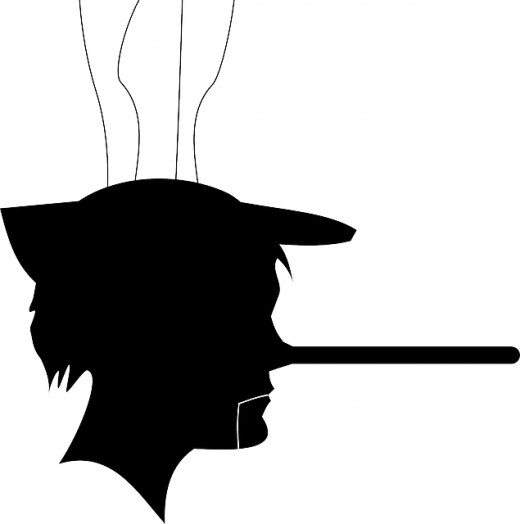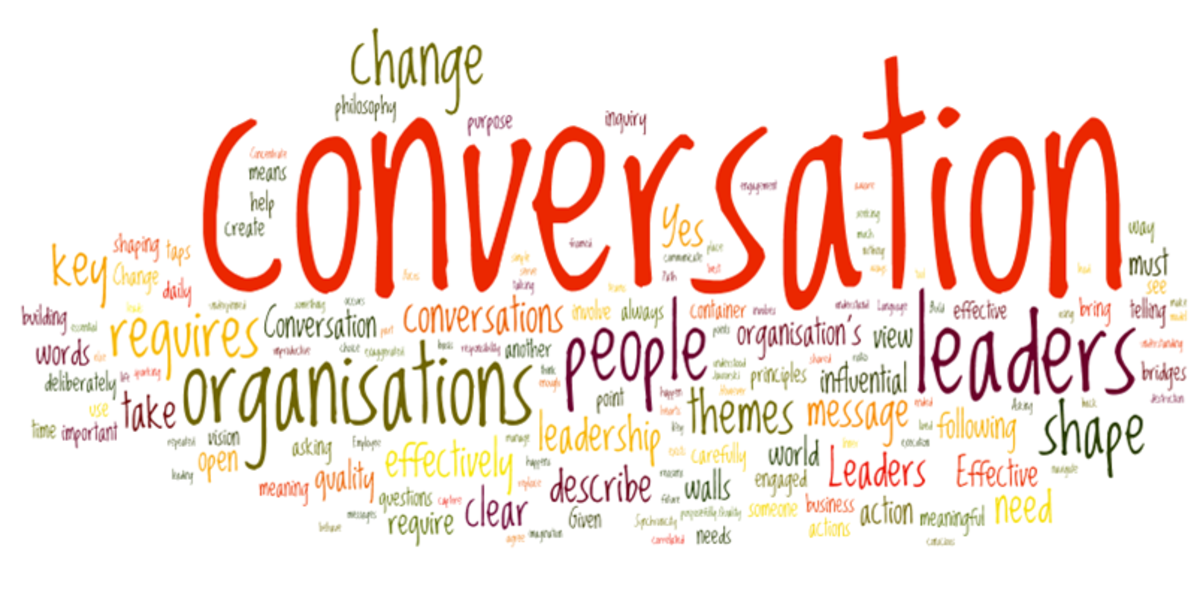Lying Body Language Interpretation
Learning to Discern Someone's Character
Have you ever been deceived? Have you ever been taken in by someone who told you a whopper of a lie, or, more likely, an entire series of them?
Chances are you have. If only you knew what to look for beforehand, you could have possibly saved yourself a lot of time, trouble and heartache.
How could you be so gullible, you keep asking yourself? What could you have done differently, so you wouldn't have been duped, you wonder?
Unfortunately, lies and liars seem more common than ever, according to author and researcher Pamela Meyer.
But the good news is we can train ourselves to spot deception, if we know what to look for. So, going forward, you can watch for subtle signs that someone may not be a straight shooter.
That's because there are a number telltale things to look for when someone is fibbing. These include various facial expressions, body language and conversation patterns.
Although picking up on just one or two things may not mean you're dealing with a habitual liar, it can tell you to proceed cautiously and ask a few more questions, in the aim of uncovering the truth.

Protecting Yourself from Liars
Learning how to recognize a potential liar is a very useful skill. Increasing your ability to discern someone's character will serve you very well.
For instance, if you're dating a liar, you'll want a heads up before becoming much more serious, or making any type of commitment. If a close friend has a dishonest side, it means you can no longer share secrets with her. If a salesperson is trying to sell you a bad bill of goods, and is pressuring you to buy, you can look for subtle body movements, which might help divert a potential consumer nightmare.
So, here are some expert tips on how to smoke out a liar.

How to Detect Deceit
FBI Agent Bill Brown
I liked all the advice given by polygraph expert and former FBI agent Bill Brown, which you can see in the video interview below.
"The eyes are a window to the soul, you can see right through them," he tells us.
A person's eyes give away a lot, he explains. Watch for someone who looks upward and to the right, often a good indicator they're not coming clean. Someone who looks up and to the left is typically telling the truth, however. This pattern will be reversed in a left-handed person. Someone who uses their left hand will probably be telling the truth when they're looking up and to the right.
Brown also warns that habitual liars will often look you directly in the eye after finishing a statement, to gauge if you are buying their story.
He says there are other things to watch for as well, which include:
- A person who crosses their arms and keeps them folded tightly around their abdomen.
- People may change their tone of voice while lying.
- Someone who rubs their neck while speaking may not be honest.
- Tapping their fingers, is a sign of nervousness.
- Positioning an object, such as a box of tissue, between them and you may be a sign someone is not being forthcoming.
Retired FBI Agent Bill Brown
Lying is Destructive
Have you ever been deceived by a con man (or woman)?
Proven Techniques to Detect Deception
Detecting a Lie
Pamela Meyer, author of Liespotting: Proven Techniques to Detect Deception, gives us additional clues to look for. She says liars often freeze their upper bodies while speaking to you. They may have a fake smile on their face.
So, how do you spot a phony smile? Meyer says to look at a person's eyes. The eyes of someone genuinely smiling at you will crinkle as if they are smiling as well. Look for the telltale signs of crow's feet around the eyes. If these are creased, that's a good sign.
The smile of a liar, on the other hand, will be more confined to the mouth, which displays sort of a frozen smile that doesn't involve the eyes. In the video below, Meyer gives you a visual example of a fake smile.
Body language speaks volumes, according to Meyer. "We rehearse our words, but seldom do we rehearse our gestures," she says in one of the You Tube videos in which she appears.
Also, according to Meyer, a dishonest person, when confronted with a question, may shake their head in the direction that's the most indicative of their true actions, despite what they happen to say. For instance, someone guilty of doing something may say "no," I didn't do it. However, even as their lips are moving, they may shake their head back and forth, as if they were saying "yes."
Also, says Meyer, a liar's voice may also drop an octave or two when saying something that isn't true.
Pamela Meyer Speaks About Liars
So, is this Person Lying?
Meyer says all of these symptoms of dishonesty, which she described,are just "red flags," but not proof that someone is trying to pull one over on us. However, she says if we do notice that something is amiss, this is our cue to begin asking some questions, politely and with respect for the other person, of course.
Unfortunately, Meyer believes we are living in very dishonest times. "There is a deception epidemic going on in our society," she says.
Looking Beyond the Body Language
Australian polygraph specialist Steve Van Aperen gives us more ways to help us spot a dishonest friend, acquaintance. coworker or business associate.
This expert on sniffing out liars also corroborates my late grandmother's words of wisdom. She was fond of saying, "One lie leads to another."
Van Aperen says that for every lie someone tells, they have to come up with two or three more lies to cover for the first. Also, according to Van Aperen, a story told by an honest person is much easier for them to recollect, because it is based on fact, not fiction.
He advises us to look beyond the body language and to dissect the structure of the story, to see if it adds up. Also, if we get a gut sense that something is amiss, it's best to heed this inner warning that, perhaps, we are not hearing the truth spoken.
Track a Potential Liar's Conversation Closely
Speed Reading People
More Things to Watch For
Retired FBI agent Joe Navarro has written a book called What Every Body is Saying. In the video below, he discusses more ways we can protect ourselves from con men and predators.
He says to watch a speakers face carefully, looking for furrowing brows and lip biting, while, at the same time, being careful not to jump to conclusions too quickly.
Contrary to popular opinion, a habitual liar will probably not immediately look away from you, but instead use sustained eye contact during a lie. He believes this is done as a form of overcompensation to hide the deception.
Liars, notes Mr. Navarro are also apt to use their hands less while speaking. Someone who is dishonest may also "violate your personal space" by standing closer to you than what is comfortable, he explains.
One of a predator's biggest weapons is the fact that the overwhelming majority of people are trusting, and believe what they're being told.
Retired FBI Agent Joe Navarro Tells You How to Peg a Liar
Disclosure
I am a participant in the Amazon Services LLC Associates Program, an affiliate advertising program designed to provide a means for sites to earn advertising fees by advertising and linking to amazon.com.











